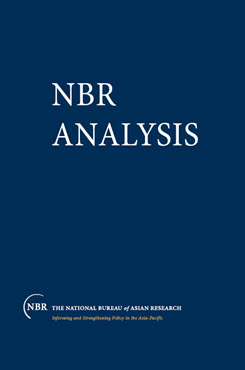Assessing India's Reactions to China's Peaceful Development Doctrine
China’s diplomatic “charm offensive” in Southeast Asia, Central Asia, the Persian Gulf region, and India’s immediate neighborhood has involved major political, economic, and strategic investments that have had the effect of bringing Indian interests under pressure. Such diplomatic penetration has, however, also made some of the courted countries wary of China’s strategic ambitions, leading these countries to search for countervailing influences. That change in turn has helped promote the acceptability of India as a player beyond South Asia.
China’s diplomatic “charm offensive” in Southeast Asia, Central Asia, the Persian Gulf region, and India’s immediate neighborhood has involved major political, economic, and strategic investments that have had the effect of bringing Indian interests under pressure. Such diplomatic penetration has, however, also made some of the courted countries wary of China’s strategic ambitions, leading these countries to search for countervailing influences. That change in turn has helped promote the acceptability of India as a player beyond South Asia. The China factor, for example, motivated the Association of Southeast Asian Nations (AS EAN) to make India a full dialogue partner. That same factor helped India to become a member of the East Asian Summit (EAS), which will design the proposed East Asian Community (EAC).
The Indian navy now conducts joint exercises with other states far beyond India’s shores, including in the South China Sea and in the Pacific. In April 2007 India, Japan, and the United States held their first trilateral naval maneuvers near Tokyo, and five months later the three teamed with Australia and Singapore for major war games on the Bay of Bengal. With U.S. encouragement, India provided naval escort in 2003 to commercial ships passing through the vulnerable, piracy-wracked Strait of Malacca. The undertaking, code-named Operation Sagittarius, was primarily designed to safeguard high-value U.S. cargo shipped from Japan passing through the Strait of Malacca on the way to Afghanistan. Through this operation the Indian navy not only demonstrated patrolling the Strait of Malacca to Southeast Asian states but also gained approval to operate in the AS EAN waters.
In several other respects, however, China’s charm offensive has either reared new strategic challenges for India or affected Indian economic or political interests. For one, China has been aggressively seizing energy-related opportunities overseas, at times to the detriment of India. For example Beijing persuaded Burma’s military junta in 2006 to sell to China gas from the partly Indian-owned A-1 and A-3 offshore blocks via a planned 2,380-kilometer pipeline to Yunnan. [1] Burma took India unawares by signing a memorandum of understanding (MOU) with China’s state-run PetroChina Company in early 2006 to supply gas to China from those same partly Indian-owned fields over a 30-year period. [2] To New Delhi’s acute embarrassment, the Burmese decision came just as India announced that New Delhi had reached an agreement with Beijing to jointly cooperate on securing oil resources overseas, a move designed to prevent…
[1] Two Indian energy firms, Oil and Natural Gas Corporation (ONGC)Videsh Limited (OVL) and Gas Authority of India Limited (GAIL), own a combined 30% stake in the adjacent Burmese gas fields A-1 and A-3.
[2] The memorandum of understanding (MOU) was followed by a $84 million soft loan from Beijing and a technical survey by PetroChina for laying the pipeline from the Burmese gas site at Kyaukphyu to Ruili in Yunnan Province. See Sanjay Dutta, “Gas Pipeline: Myanmar Takes India for a Ride,” Times of India, March 27, 2006.


